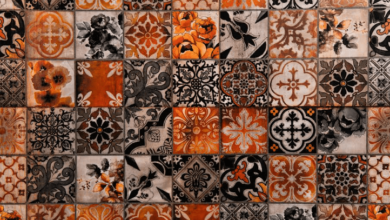6 Steps to Effectively Waterproof Your Bathroom

When installing a new bathroom, you want to make sure everything is done right the first time. After all, who wants to have to do it over again? A key component in any bathroom installation is a bathroom shower waterproofing system. While there are many ways to waterproof your shower or tub, this article will focus on four of the most effective methods: using backer board underlayment with integrated membranes, applying a separate membrane over the pan before placing the tile on top of it, sealing joints between walls and floors where they meet into one continuous barrier that runs all around the room (also known as skirt flashing), and applying a liquid sealant directly over grout joints between tiles after they’ve been installed. To get started with any of these approaches for ensuring your new shower stays dry for decades to come without leaks or water damage issues cropping up down the road:
Determine the extent of waterproofing needed.
You can’t waterproof a room until you know where water is coming in. Check for leaks, and if you are not sure, call a professional to investigate the extent of the damage. If you find that there is a leak or other issue, consult your building owner or manager before attempting any repairs yourself. You will want to make sure that any work done by an outside contractor complies with local building codes.
Once you have determined the extent of damage and potential sources of water infiltration, look at the walls themselves to determine whether they are damaged or deteriorated and need to be replaced entirely. Check carefully around doorways and windows because these areas are prone to wear over time due to constant opening and closing (or even just walking through them).
Use waterproofing products that are made for shower and tub walls.
If you want to waterproof your bathroom, use a product that is made for shower and tub walls. There are many ways to waterproof a bathroom and depending on how much time you want to spend fixing your problem and the extent of damage, you may want to choose between different methods. In this article, we will explore two options for solving this problem: one that takes less time but still works well; another that takes longer but is more effective in the long run.
Choose a moisture-resistant backer board.
To understand the importance of choosing a moisture-resistant backer board, you need to know what a backer board is. It’s a specially formulated board used in tile installations where it can expand and contract with changes in humidity without breaking apart.
The first step to choosing an appropriate material for your bathroom waterproofing project is to consult with a contractor or specialist who understands the local building codes and will make sure that you choose the right type of backing board. Your contractor should also be able to tell you which materials will work best in your climate zone (i.e., where there’s excessive heat or cold).
Use an integrated waterproofing membrane for your shower pan.
If you’re building a new shower, you may not need to worry about waterproofing the shower pan. Most home improvement stores sell pre-formed plastic shower pans, or you can buy them in bulk and make your own.
If you have an existing tile-and-mortar shower that isn’t leaking, it’s probably not necessary to change anything in your current installation if you don’t want to. But if there are any cracks or leaks around the edge of the tub and walls, consider using an integrated waterproofing membrane for your shower pan. This is especially important if your bathroom has tile along its floor because water will seep up through those cracks and lead to mold growth on top of the floorboards below it.
Apply the waterproofing membrane over the entire bathroom.
For this step, you’ll need to have a spray gun, roller, and enough waterproofing membrane for your project. To apply the waterproofing membrane with a spray gun:
First, place an electric drill on the floor in front of you so it faces away from you and is perpendicular to your body.
Second, use one hand to hold onto a piece of wood or cardboard that is thick enough to support your weight (if necessary).
Third, stand on top of this piece of wood or cardboard while holding onto either side of the electric drill with both hands.
Finally, hold down both triggers at once as you raise them toward your chest level with both hands facing forward; then let go when they reach chest height so they can retract back into place automatically; repeat until all four sides are done.
Conclusion
There are many steps to the process of waterproofing your bathroom, but it is worth it to take the time to do it right. If you follow these tips and use the right materials, you can save yourself a lot of headaches down the road. A good waterproofing job will protect your investment and prevent leaks or water damage.



